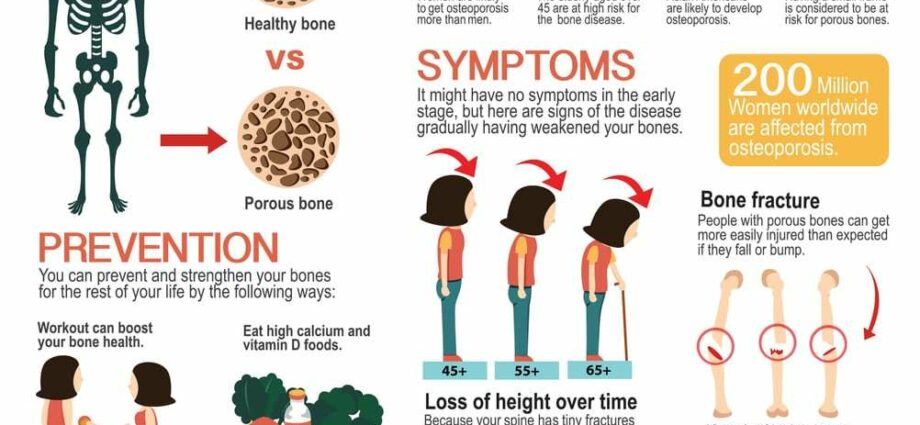Prevent osteoporosis
|
Screening measures |
Most expert groups, including Osteoporosis Canada33, recommend that the following people undergo an in-depth assessment of risk of fractures by a doctor, as mentioned at the beginning of the sheet:
In certain special cases, for example in the event of rheumatoid arthritis, a screening could be proposed before the fiftieth.
|
Basic preventive measures |
The following 3 measures are the most important. It is also good to avoid the risk factors described above as much as possible. Get physical exercise. Studies show exercise is good for bones, throughout life4-6 . Being active during childhood and adolescence is particularly important, because it allows you to build a more resistant skeleton, and therefore to build up bone mass reserves that will be used in adulthood. Physically fit people develop a better balance and better coordination, which reduces their risk of falling. It is recommended to practice a minimum of 30 minutes at least physical activity 3 times a week. What matters most is not the duration of the sessions, but their frequency7. Here are the various types of exercises recommended.
Eat foods rich in calcium. Almost every cell in the body needs calcium in order to function properly. Eating a diet that contains enough calcium helps meet the body’s needs without having to draw on its reserves, i.e. bones. You can get an adequate intake of calcium by regularly eating dairy products, salmon (with the bones), sardines, dark green vegetables (broccoli, etc.), soy products (tofu, soy milk enriched with calcium). To find out if you’re getting enough calcium, use our interactive calculator. For more information, see our Calcium sheet. Have an adequate intake of vitamin D. This vitamin is vital for healthy bones and teeth. It improves the absorption of calcium in the intestine and participates in the fixation of this mineral in the bones. Its active form is synthesized in the skin when it is exposed to the sun’s ultraviolet rays. There is little vitamin D in foods in its active form, except in fish (sardines, mackerel, herring, salmon, etc.). This is why, in North America, milk and margarine are fortified with vitamin D. Some cereals and certain rice or soy drinks are also fortified. Consult the Vitamin D sheet for more information.
|
Other preventive measures |
Calcium and vitamin D supplements Here are the recommendations issued by Osteoporosis Canada33 :
|










